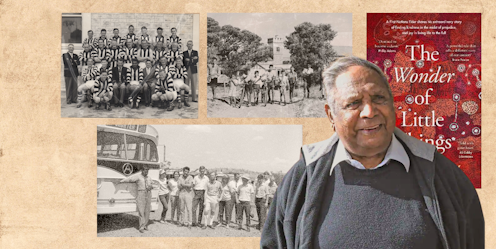Vince Copley had a vision for a better Australia – and he helped make it happen, with lifelong friend Charles Perkins
- Written by Sandra Phillips, Associate Professor of Indigenous Australian Studies, School of Humanities and Communication Arts, Western Sydney University

Aboriginal and Torres Strait Islander readers are advised this article contains names and images of deceased people.
In his memoir’s final chapter, Vince Copley wonders: if the first legal marriage of an Aboriginal woman and a white man had been socially accepted in the 1850s, would his own wife have been spared being pushed to the end of the 1970s bank queue because she was with him, a blackfella? Would that real estate agent have considered their application instead of throwing it straight in the bin? Would their daughter have been spared the schoolyard bullying and their son the name-calling?
Copley is descended (through his grandmother Maisie May Edwards, nee Adams) from Kudnarto[1], the Kaurna woman who married shepherd Thomas Adams on 27 January 1848, in South Australia’s first legal marriage between an Aboriginal woman and a colonist. His ancestral connections included Ngadjuri, Narungga, and Ngarrindjeri.
Review: The Wonder of Little Things – Vince Copley and Lea McInerney (ABC Books)
Readers of The Wonder of Little Things[2] (2022) will find it hard to think of Vince Copley in the past tense. Crafted from oral storytelling of around about 300 recollections, Copley’s voice in this first-person memoir brings you close, almost as if you are sitting at a table with him, drinking his fabled cups of tea.
A humble man who met kings, queens and heroes
Born on a government mission in 1936, Vince died at home on January 10 2022, aged 85, after the complete manuscript he had prepared with writer Lea McInerney was written and the publisher had despatched questions for final revision. His beloved wife Brenda had passed in 2020 and it was she who had lovingly “bullied” him into telling the story of his life, so their kids would know what he had done.

















